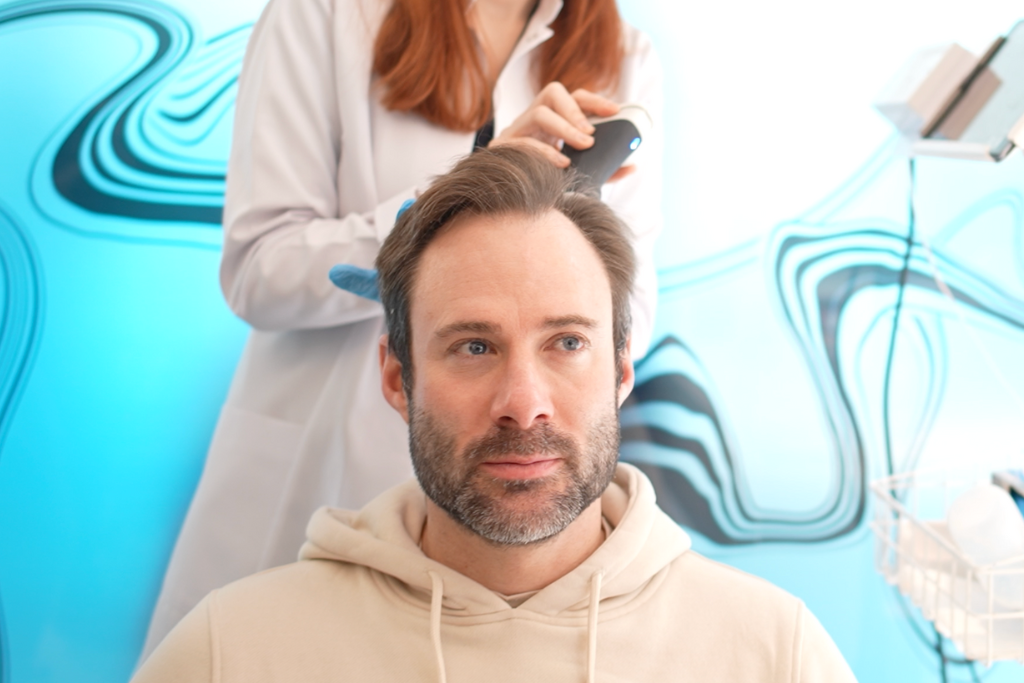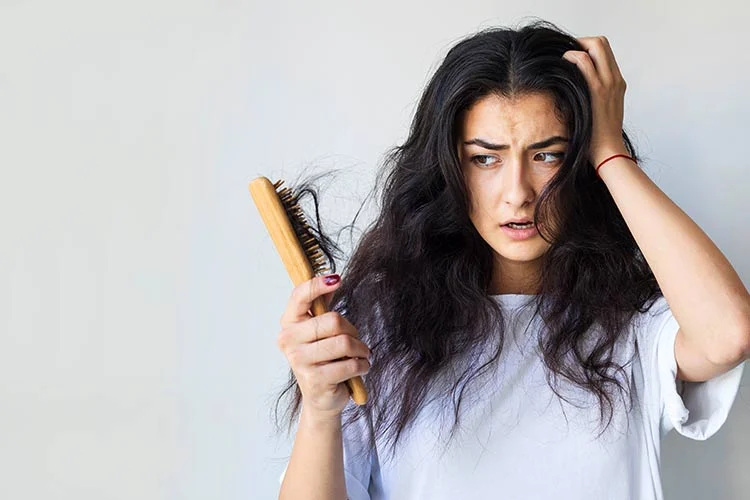
How Social Media Is Transforming Our Perception of Hair Loss
Hair loss has long been a topic many avoided — a private matter often associated with insecurity or shame. But with the rise of social media, this perception has undergone a major shift. Today, hair loss is no longer seen solely as a personal issue but is increasingly discussed in the public sphere.
Platforms like Instagram, YouTube and TikTok have played a key role in reshaping how we view hair loss — and acceptance of hair transplants is on the rise. But how exactly has social media changed our perception, and why is it now easier for many to engage with the topic of hair restoration?

- From Taboo to Mainstream: Hair Loss on Social Media
- The Growing Acceptance of Hair Transplants
- Raising Awareness: Why Hair Loss Is No Longer a Niche Topic
- Hair Loss in Men vs Women: A Digital Double Standard
- Digital Platforms and Hair Loss: Visibility and Education
- Innovations Driven by Social Media: A Look Ahead
- Conclusion: A New Chapter in How We Perceive Hair Loss
- FAQs
From Taboo to Mainstream: Hair Loss on Social Media
Just a few years ago, there were hardly any public conversations about hair loss — neither in the media nor among friends. Those affected often felt isolated in dealing with their situation. Social media platforms, particularly YouTube, have changed that. Today, influencers, celebrities and everyday users openly share their experiences through posts, videos and stories.
This new level of openness has brought hair loss out of the shadows and into the public conversation. Millions of people are now exposed to content discussing the various causes of hair loss, treatment options and personal transformations. The biggest change? Those affected no longer have to search alone for solutions — social media offers a vast, supportive community focused on exactly these issues.
The Growing Acceptance of Hair Transplants
Alongside breaking the taboo around hair loss, social media has also significantly changed how we view modern hair treatments. Where people once kept such procedures private, today it’s becoming normal to speak openly about them.
Famous faces from sport, entertainment and social media have paved the way — showing through their own positive experiences that hair transplants can be a highly effective solution.
This increased visibility has led to greater societal acceptance. Those who opt for a hair transplant no longer feel the need to justify themselves or hide. On the contrary: openly discussing the desire for fuller hair and choosing a treatment has now become the norm.

Raising Awareness: Why Hair Loss Is No Longer a Niche Topic
One of the driving forces behind this change is the role of influencers. Social media has helped bring hair transplants into the mainstream. More and more individuals are sharing their journeys publicly — from the moment they decide to undergo treatment all the way to their final results.
This transparency has fundamentally changed the way society views hair loss. Where once the topic was clouded by stigma and uncertainty, it’s now entirely acceptable to speak openly about it — whether it’s a hair or even a beard transplant. People who may have hesitated in the past are now inspired daily by authentic success stories and visible transformations.
The rising number of testimonials clearly shows: society increasingly views hair transplants as a normal and effective solution. What was once done behind closed doors is now being shared with millions on Instagram, YouTube and TikTok. This shift makes it easier than ever for individuals to gather information, connect with others and make well-informed decisions.

Hair Loss in Men vs Women: A Digital Double Standard
While men have been more open for some time about hair loss and possible treatments, the subject has traditionally been far more sensitive for women. For a long time, full hair was seen as a symbol of female beauty — making hair loss especially difficult to talk about.
But social media is changing that perception. Female influencers and affected women are breaking the taboo by publicly sharing their transformations and how these procedures have boosted their self-confidence.
Their openness makes one thing clear: hair transplants are not just for men. Stories and before-and-after photos help to dispel uncertainty and prove that modern hair restoration techniques are just as beneficial for women.
Digital Platforms and Hair Loss: Visibility and Education
Social media has become an essential platform for offering transparent insights into the topic. Alongside influencers and experts, reputable hair clinics are using Instagram, TikTok and YouTube to showcase their work. They share before-and-after results, explain procedures and offer detailed insights into the healing process.
This openness allows those interested to get first-hand information on modern techniques and realistic results. Serious clinics rely on transparency, sharing authentic patient experiences and documented recovery journeys. This not only builds trust among potential patients but also helps establish hair transplants as a proven, accessible solution for hair loss.
Innovations Driven by Social Media: A Look Ahead
Social media is more than a tool for communication — it’s a catalyst for innovation in the field of modern hair treatments. Platforms like Instagram and TikTok enable companies to present new technologies and treatment methods to a wide audience.
From virtual consultations to live demos and even crowdfunding campaigns — social media is pushing progress and making it more accessible for those affected.
Looking to the future, social media’s role could grow even further. AI-powered tools might offer personalised treatment recommendations based on users’ individual needs. At the same time, new platforms may emerge, focusing specifically on hair loss and related issues to offer targeted and effective guidance.
In this way, social media becomes not just a space for exchange, but a bridge between individuals, professionals and innovative solutions.
Conclusion: A New Chapter in How We Perceive Hair Loss
Social media has broken old taboos and ushered in a new era of openness around hair loss. Platforms like Instagram and TikTok are bringing the issue out of the shadows and encouraging greater awareness of the emotional and physical challenges involved.
At the same time, they present a wide range of solutions — from self-acceptance to cutting-edge treatments. Personal stories, expert insights and transparent content are helping to build trust and make access to treatments like hair transplants easier than ever.
This evolution goes far beyond appearance — it highlights the deeper impact of hair loss on confidence, mental health and social life. Social media gives those affected a voice, clears up misconceptions and fosters solidarity. The message is clear: openness is strength — and this transformation benefits us all.
FAQs
What are the most common causes of hair loss discussed on social media?
The most frequently discussed causes include genetic hair loss (androgenetic alopecia), stress-related shedding, hormonal changes, poor nutrition, and medical conditions such as alopecia areata. Social media has helped demystify these causes, making it easier for people to identify their own symptoms and seek targeted advice or treatment.
Which social media platforms are most influential in shaping public opinion on hair loss and hair transplants?
Instagram, TikTok and YouTube are particularly influential. These platforms enable users to share detailed visual journeys — from the early stages of hair loss to full recovery after treatment. TikTok’s short-form videos often go viral, while YouTube allows for more in-depth documentation and expert interviews.
What role do clinics and professionals play in shaping the conversation around hair loss online?
Clinics and medical professionals contribute by offering educational content, showcasing real-life patient transformations and explaining procedures in detail. Their presence adds credibility and helps distinguish between serious providers and unverified claims, ultimately promoting responsible decision-making.
Are there risks or misinformation associated with the growing online visibility of hair transplants?
Yes, with increased visibility comes the risk of misinformation, unrealistic expectations and unregulated providers. Some content may promote ‘miracle cures’ or hide the recovery process. It’s essential for users to rely on verified sources, consult professionals and be cautious about promises that seem too good to be true.
How are younger audiences engaging with the topic of hair loss?
Younger people, particularly Gen Z, are engaging with the topic through humorous content, reaction videos and ‘glow-up’ transformations. They are more likely to speak openly about hair insecurities, helping to further normalise the conversation and reduce the stigma.
How do hair transplants for women differ from those for men?
While the core technique may be similar, hair transplants for women often require more customised approaches due to differences in hair loss patterns. Women may retain their frontal hairline but experience diffuse thinning, which requires careful planning. Surgeons must also consider aesthetic preferences and hormonal factors more closely.
What are the psychological effects of sharing a hair loss journey online?
Many individuals report increased confidence and a sense of empowerment after sharing their story. Publicly documenting the journey helps reduce shame and creates a sense of solidarity. However, it can also be emotionally vulnerable, which is why support from online communities is crucial.
Are non-surgical treatments for hair loss also gaining traction on social media?
Absolutely. Treatments such as PRP therapy, microneedling, topical minoxidil and dietary supplements are frequently discussed. Influencers often compare their experiences with surgical and non-surgical options, giving viewers a more holistic understanding of what’s available.
Has the increased openness about hair loss led to greater demand for treatments?
Yes, clinics worldwide are seeing rising interest in both surgical and non-surgical treatments. Many people now feel more informed and motivated to take action, thanks to the visibility of real outcomes and the destigmatisation of seeking help.
How can someone ensure the hair transplant content they’re seeing online is trustworthy?
Look for verified professionals, licensed clinics and content that shows long-term results, not just immediate after-effects. Authentic testimonials, transparency about the recovery process and the presence of medical explanations are usually good signs of credibility.


